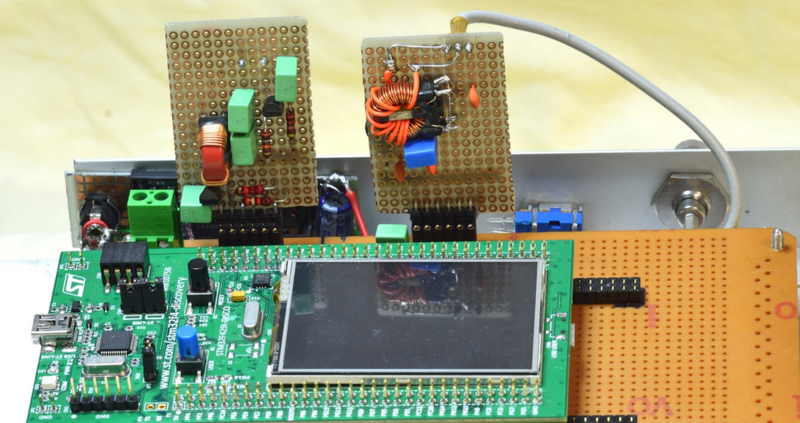[Alberto di Bene] wanted to build an SDR for relatively low frequencies. Usually, you’d start with some front end to get the radio frequency signal down where you can work with it. But [Alberto] practically just fed an antenna into an STM32F429 Discovery board and did all the radio processing in the onboard ARM chip.
There is a little more to it than that, but only a little. If you open the PDF file on [Alberto’s] site, you’ll see there is a simple front end filter (a transformer, along with a few capacitors and inductors). This low pass filter prevents high frequencies from reaching the ARM processor’s analog to digital converter. In addition, a capacitor and a couple of resistors ensure the converter only sees positive voltages.
The CPU digitizes the incoming signal and processes it, demodulating several different types of radio transmission. The recovered audio is sent through the onboard digital to analog converter.
In addition to an input filter, the output also needs a filter to prevent high frequencies from reaching the speaker. Unlike the input filter, this one is a bit more complicated. The inductors needed for a passive filter were too large to be practical, so the output filter is an active one with a few transistors. The only other external circuitry is the power supply for the Discovery board.
The document does a great job of explaining the rationale behind the design choices and how the whole system works. It also includes simulations of both analog and digital filters used in the design.
This is really bare metal SDR and reading the code is educational. However, if you want to start with something simpler, consider GNU Radio and either an SDRPlay or a cheap RTL-SDR dongle.
















If you use a band pass filter instead of a low pass, it’s possible to hit higher frequency bands by undersampling.
True, though we don’t know how these ADCs are built. They may be realized as switched capacitor or something and exact characteristics of sample-and-hold are not known out-of-spec.
One thing that struck me is that I don’t see any RF input amplifier… Is he using the on-chip PGA?
The detail in the pdf is awesome! great find, thanks for sharing.
I am curious what you can do with the F7 Discovery Board?